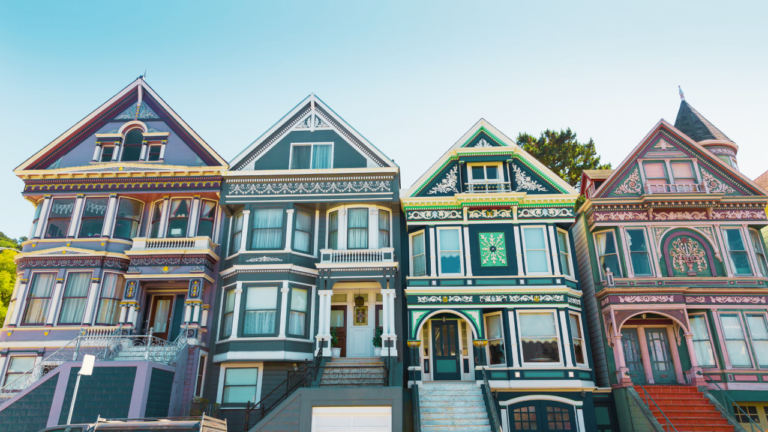As the saying goes, aging is not for the faint of heart. With age comes wisdom, but also often a decline in physical abilities and changes in daily needs. This can make living independently more challenging, and in some cases even dangerous, especially when navigating your own home.
In many cases, when physical limitations arise, individuals may choose to downsize or move into a retirement community. Moving in with adult children or extended family is also a common solution. However, for many seniors, their home is a place filled with precious memories and familiar surroundings that they wish to remain in as long as possible.
The good news is with the right home modifications, seniors can continue living comfortably and safely in their own homes. These upgrades not only cater to seniors’ changing needs and abilities but also allow for increased independence and peace of mind for themselves and those who care for them. Here are 10 smart home modifications to consider that will help make aging in your own home a feasible reality.
Secure Bathroom Mobility
By far, the bathroom is often considered one of the most dangerous rooms in the home for seniors. My mother once collapsed in her bathroom and likely would have died there had her friend not been visiting and found her. Slippery floors, high bathtubs, and low toilets all pose a risk for falls and injuries for individuals who are less mobile and steady on their feet.
Installing grab bars near the toilet and shower/tub area can provide support for stability when getting up or moving around. This can go a long way towards fostering safer navigation and confidence in using the bathroom.
Single-Level Living Solution
Multi-story homes can be difficult to navigate for seniors as they age, leading to an increased risk of falls and injuries. To make your home more accessible, consider transforming a lesser-used ground-floor room (if available) into a main bedroom. It may not be the bedroom you dreamed of, but this can significantly minimize stair use, enhancing safety and accessibility.
Doorway Expansion for Easy Access
An often overlooked, yet challenging obstacle for seniors is navigating through doorways. Standard doorways are often too narrow to accommodate wheelchairs and walkers, making it difficult for individuals with mobility issues to move freely between rooms. By widening doorways a minimum of 36 inches and eliminating thresholds or steps, you can create a more accessible environment that promotes easy movement throughout the home.

Flooring for Safety and Comfort
Flooring is another common culprit of accidents for seniors. Traditional carpeting can be challenging to navigate with a wheelchair or walker, and hardwood flooring may be too slippery for individuals with mobility issues.
Consider installing non-slip flooring throughout the home, such as vinyl or cork flooring. These options offer better traction and are softer underfoot, reducing the chances of slips and falls. They’re also easier to clean and maintain, making them an ideal choice for seniors who may have difficulty with household chores. It’s also important to remove any loose rugs that can pose a tripping hazard and opt for non-slip mats in places where water may be present, such as kitchens and bathrooms.
Lever-Style Door Handles
In addition to widening doorways, changing out traditional doorknobs for lever-style handles can make a significant difference in accessibility for seniors. Lever-style handles are easier to grasp and operate for individuals with arthritis or limited hand mobility.
Consider opting for handles with larger grips and bold colors that provide better contrast against the door color, making them easier to see and use.
Enhanced Lighting for Visibility
Good lighting can do wonders for improving visibility and preventing accidents in the home. As we age, our eyesight may decline, making it more challenging to see obstacles or navigate through dimly lit areas.
Install additional lighting throughout the home, especially in hallways, stairwells, and bathrooms. Consider adding motion-sensor lights in areas where switches may be hard to reach, such as at the top and bottom of staircases.
Walk-in showers for Easy Access
Stepping over a high bathtub wall can be challenging and risky for seniors. Walk-in showers, on the other hand, provide easy access without any barriers. This eliminates the need to lift your legs to get in and out, reducing the risk of falls.
For added safety, consider installing grab bars and a non-slip shower floor. A built-in shower bench can also provide a comfortable place to sit while bathing.
Accessible Toilets for Comfort
Standard toilets may be too low for seniors with knee or hip problems, making it difficult for them to stand up and sit down. Installing an elevated or comfort-height toilet can provide better accessibility and reduce strain on joints.
For individuals with more severe mobility issues, a wall-mounted toilet with a higher seat may be the best option as it allows for more space around the toilet area.

Kitchen Modifications for Ease of Use
The kitchen is another room that requires careful consideration when making modifications for seniors. Lowering countertops and cabinetry, and installing pull-out shelving can make it easier to reach items without having to bend down or strain.
Replacing traditional kitchen faucets with lever-style handles is also recommended, as they are more convenient for individuals with limited hand mobility.
Stairlifts for Multi-Level Homes
For seniors who live in multi-level homes and where transforming to single-level living isn’t feasible, navigating the stairs can be one of their biggest challenges. Installing a stairlift can be a game-changer, by providing a safe and easy way to move between floors.
Stairlifts come in various models, including straight and curved options, and can be customized to fit your specific staircase. They are also relatively easy to install and do not require any major structural changes to the home.
Each of these modifications not only enhances the living experience for individuals who are aging in place but also promotes safety and independence. With a few simple upgrades and adjustments, seniors can continue to live comfortably and safely in their own homes for years to come.








